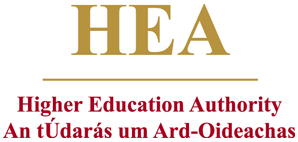An triúr deartháir - Séamas Ó Scolaí
Recording: [Download audio file]
[Download AIFF audio file (of processed ‘user’ version)]
[Download AIFF audio file (of archive version)]
Transcript
Do bhí triúr dearthár agus deirfiúr i dteannta a chéile i gcontae Thiobrad Árann. Dúirt an deartháir críonna gur leis féin an ball agus a raibh ann. Dúirt an chuid eile ná raibh aon chall aige chútha ach... chuige ach comh beag leo féin. Ansan d'éiríodar chun a chéile agus do bhuaileadar. Agus do mharaibh an deartháir óg an bheirt. D'imigh an deirfiúr agus do ghearán sí é leis na pílears. Thánadar agus tógadh iad agus tugadh i láthair giúistís é. Agus do trialladh ansan é. Do cuireadh i láthair coiste é agus breithimh. Agus do fuarthas ciontach é agus do crochadh é. Do bhí an ball agus a raibh ann ag an deirfír ansan.
Translation
There were three brothers and a sister together in county Tipperary. The eldest brother said that he owned the place and all that was there. The others said that he had no more of a right to them... to it than they had. Then they went for each other and they struck each other. And the youngest brother killed the two. The sister went and she reported him to the peelers. They came and they were arrested and he was brought before the magistrate. And then he was tried. He was put before a jury and a judge. And he was found guilty and he was hanged. Then the sister got the place and all that was there.
Commentary
This appears to be an example of a parable, a tale that conveys a moral message. The brothers' greed and foolishness lead to their downfall, allowing their sister, the only one who did not argue, to inherit the fortune. It seems to be thematically related to another story in the Doegen collection, 'Bhí triúr deirfiúr agus deartháir ann' by the county Tyrone informant Pádraig Ó Gallchobhair. This in turn is an example of a story, common in Irish tradition, concerning family members arguing over the division of land, sheaves of corn and finally a single grain, which they pursue down a bog hole or into a river, with the result that they lose their lives in the process. It has been recorded in several places around the country in the late nineteenth and early twentieth centuries, including counties Kerry and Roscommon. See An Seabhac, 'An Gráinne Corr', Béaloideas 3:4 (1932), 432-4. See also Séamus Ó Duilearga, 'An dáréag seana-chailleach', Béaloideas 2:1 (1929), 69-70.
Title in English: The three brothers
Digital version published by: Doegen Records Web Project, Royal Irish Academy
Description of the Recording:
Speaker:
Séamas
Ó Scolaí from Co. Cork
Person who made the recording:
Wilhelm Doegen
Organizer and administrator of the recording scheme: The Royal Irish Academy
In collaboration with: Lautabteilung, Preußische Staatsbibliothek (now Lautarchiv,
Humboldt-Universität zu Berlin)
Recorded on 12-09-1928 at 16:25:00 in Convent
of Mercy, Killarney (office). Recorded on 12-09-1928 at 16:25:00 in Convent
of Mercy, Killarney (office).
Archive recording (ID LA_1080d3, from a shellac disk stored at the
Royal Irish Academy) is 01:44 minutes
long. Archive recording (ID LA_1080d3, from a shellac disk stored at the
Royal Irish Academy) is 01:44 minutes
long.
User recording (ID LA_1080d3, from a shellac disk stored at the Royal
Irish Academy) is 00:55 minutes long. User recording (ID LA_1080d3, from a shellac disk stored at the Royal
Irish Academy) is 00:55 minutes long.





